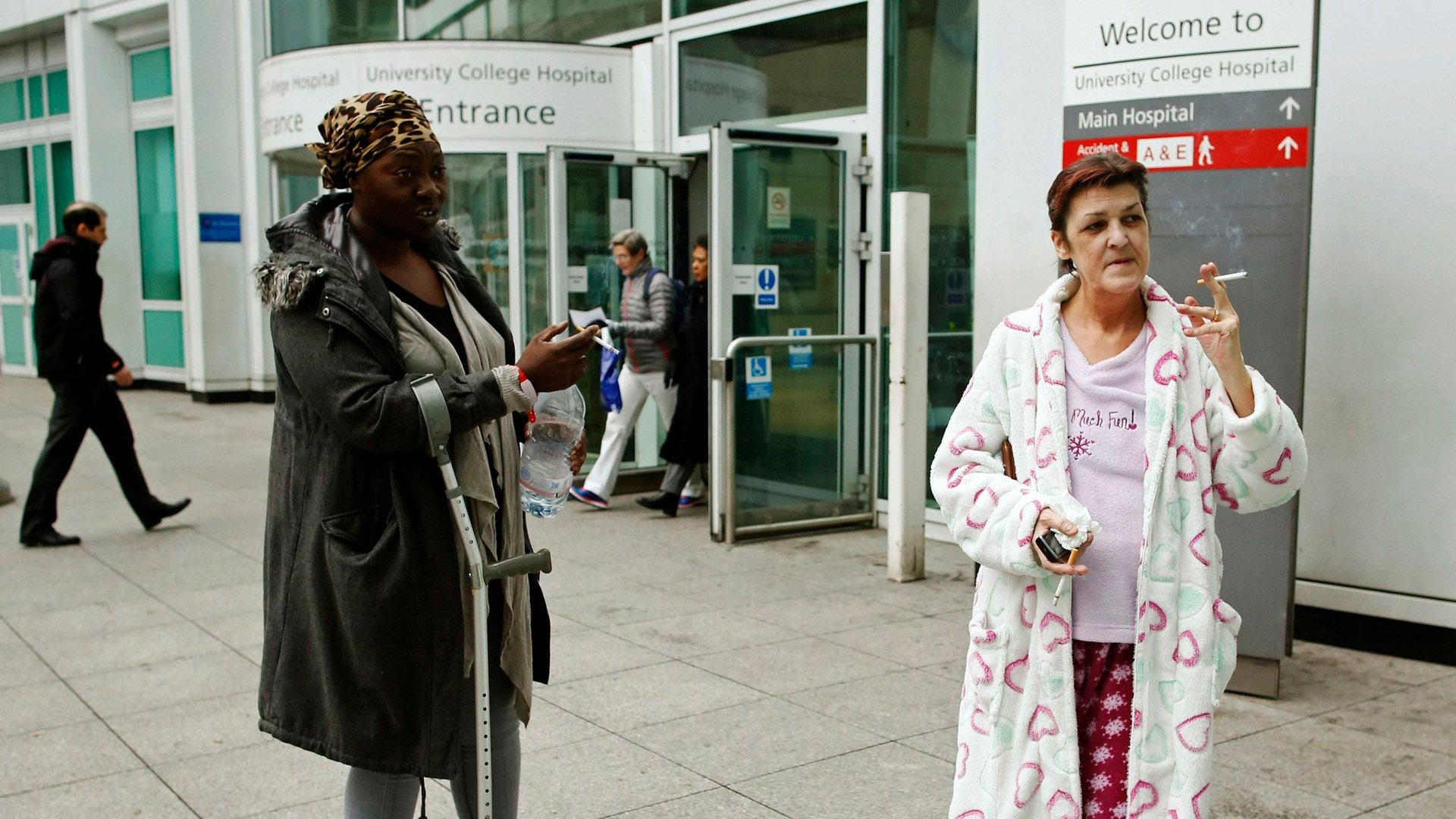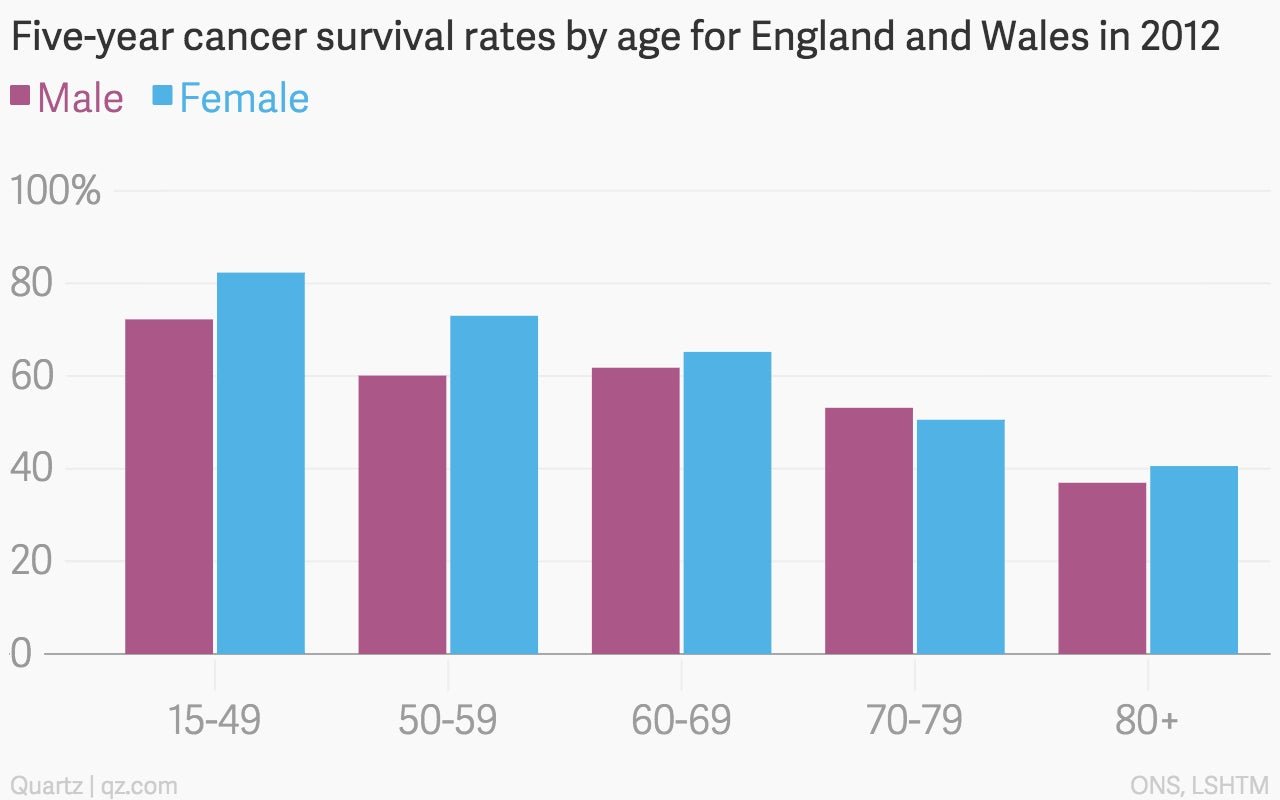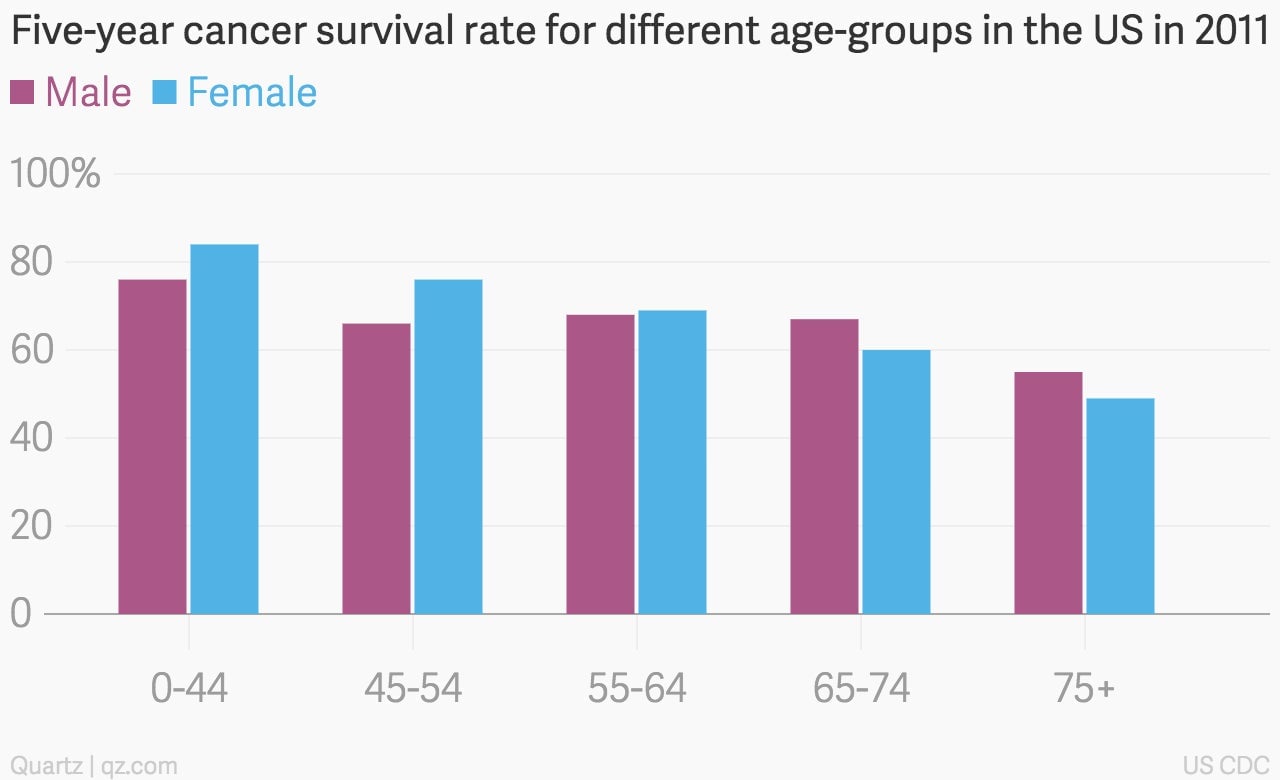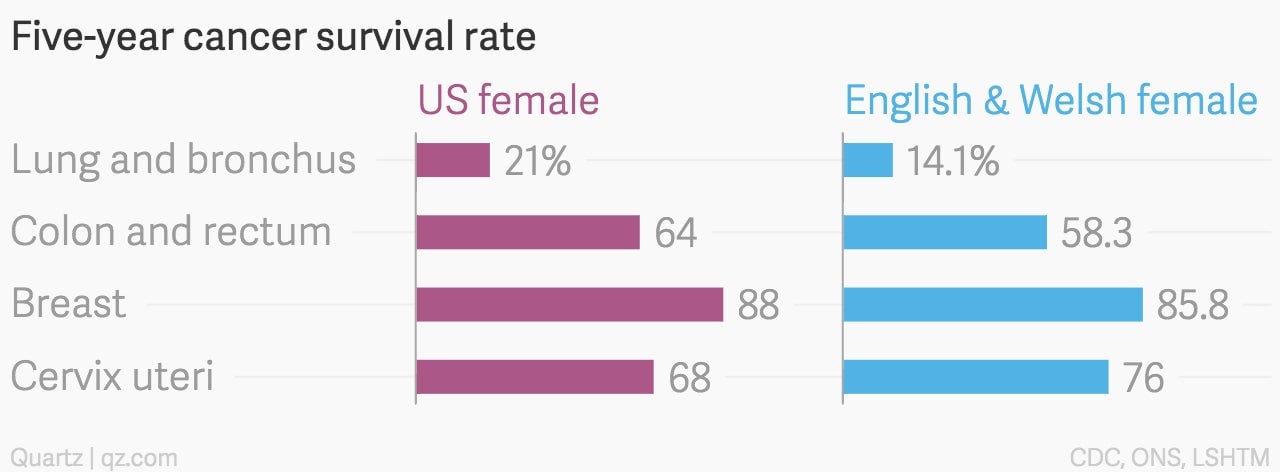The British seem less likely to get cancer than Americans but are also less likely to survive. Why?
In the UK, more than 330,000 cases of cancer were diagnosed in 2011. That compares favorably with the rate of cancer in the US—396 per 100,000 people in the UK vs. 451 per 100,000 in the US.


In the UK, more than 330,000 cases of cancer were diagnosed in 2011. That compares favorably with the rate of cancer in the US—396 per 100,000 people in the UK vs. 451 per 100,000 in the US.
But even though people in England, where the UK’s largest population is, are less likely to get cancer, five years after diagnosis, only 56% of English cancer patients survive, compared to 65% of American patients.
This difference raises many interesting questions about the difference between the two countries’ healthcare systems. But before we try to understand why there is such a difference, let’s look at the data.
In England and Wales, data from the Office for National Statistics show that survival rates varied by age—from 82% for females between 15 and 49 years of age, to 37% for males over 80.

The trend for variation by age was similar in the US—from 84% for females under 44 years of age to 52% for males over 75. (These numbers are not directly comparable because the age brackets differ between the statistics of these countries.)

But when you look at survival rates for specific cancers, things start to look different. For the three most common cancers among males—lung and bronchus, colon and rectum, and prostate—American patients seem to survive longer than English patients.

Except for the cancers of the cervix and uterus, American women also survive their most common cancers—lung and bronchus, colon and rectum, and breast—better than English women do.

Margaret Gates, an assistant professor of epidemiology at State University of New York at Albany, was a little surprised by the differences, too. She told Quartz that a number of factors could explain the difference.
For instance, treatment regimes in the US may be more aggressive than across the Atlantic. There may also be lifestyle differences, associated with the culture and racial make-up of the two countries. And, of course, the countries have vastly different systems of healthcare—the US has a system based on private insurance while the UK has a comprehensive national healthcare system.
Devil is in the details
But the biggest contributing factor to the difference in survival rates might be over-diagnosis. Survival rates measure the likelihood that a patient survives for a certain period of time after diagnosis. So if a patient is diagnosed (or misdiagnosed) earlier, his or her chance of survival increases.
However, if American healthcare was indeed better than Britain’s National Health Service, then the number of deaths from cancers should be fewer in the US than in England and Wales. This can be explained and measured by another statistic—the cancer mortality rate—and it turns out that they aren’t very different for the two countries.
The cancer mortality rate for the US in 2010 was 172 per 100,000, and for the UK in 2010 was 178 per 100,000. This is a much smaller difference, especially when compared to the side-by-side cancer incidence rates (451 per 100,000 vs 396 per 100,000).
Gates told Quartz that over-diagnosis related to screening in the US may likely drive the large difference in survival rates and incidence rates, especially in the common cancers of the prostate and breast.
In other words, the American medical system seems to catch the existence of cancer earlier and in more people than the UK system does. That is why the number of cancer cases appears to be higher. But such diagnoses mean that, among those diagnosed, fewer people die in the timeframe used for calculating survival rates.
So it might appear that it is better to live in US, especially if you are at a higher risk of suffering from cancer. But that may only work, if you are also ready to spend a lot more money.
And before you jump to a conclusion, it’s worth noting what the medical charity Cancer Research UK points out: comparing two countries’ health data is difficult, often simply because of the way the data are recorded. For instance, in the UK, every death is registered nationally but the US dataset is not so complete.
There is, however, one positive trend for both countries which is comparable. In the US and the UK, the number of total deaths from cancer has fallen by more than 20% in the last two decades—and it continues to fall.